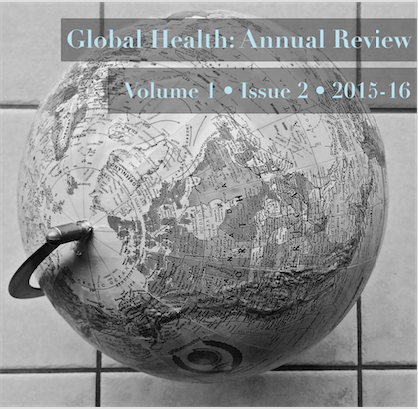Redefining Schistosomiasis haematobium in Light of its Impact on HIV Transmission: An argument for reinvigorated global commitment to Schistosomiasis control
Résumé
This paper argues that Schistosomiasis haematobium infection should be globally reframed as not just a neglected tropical disease, but among the most important cofactors of HIV/AIDS in sub-Saharan Africa; it states that elimination should not be considered an unattainable ideal, but a tremendously effective method of curtailing the HIV/AIDS epidemic in co-endemic regions. First, recently generated epidemiological and clinical evidence that suggests a potential interaction is discussed. Second, the pathophysiological hypothesis supporting this association is elucidated upon. Finally, the WHO-stipulated criteria for priority HIV interventions is introduced, which are adequately satisfied by the four pillars of schistosomiasis elimination programming. This paper claims that if SH can be redefined and integrated into widely-politicized and well-funded HIV-programming to receive the attention it requires, the world could witness not only the elimination of the second deadliest parasitic infection, but an impressive assault on the epidemic that for four decades has devastated the globe.
Références
Simon. Impacts of neglected tropical disease on incidence and progression of HIV/AIDS, tuberculosis, and malaria: scientific links. International Journal Of Infectious Disease 2016; 42: 54-57. http://dx.doi.org/10.1016/j.ijid.2015.11.006
Hotez P, Fenwick, A. Schistosomiasis in Africa: an emerging tragedy in our new global health decade. Plos Negl Trop Dis 2009; 3(9): e485. http://dx.doi.org/10.1371/journal.pntd.0000485
Inobaya MT, Olveda RM, Chau TN, Olveda DU, Ross AGP. Prevention and control of schistosomiasis: a current perspective.. Res Rep Trop Med 2014; 2014(5): 65-67. http://dx.doi.org/10.2147/rrtm.s44274
Sinick J. GiveWell: Cost-effectiveness in $/DALY for deworming interventions. http://www.givewell.org/international/technical/programs/deworming/cost-effectiveness
Hotez P, Fenwick A, Kjetland E. Africa's 32 cents solution for HIV/AIDS. Plos Negl Trop Dis 2009; 3(4): e430. http://dx.doi.org/10.1371/journal.pntd.0000430
Colley D, Bustinduy A, Secor W, King C. Human schistosomiasis. The Lancet 2014; 383(9936): 2253-2264. http://dx.doi.org/10.1016/s0140-6736(13)61949-2
Choffnes E, Relman D. Global funding of new products for neglected tropical diseases. The causes and impacts of neglected tropical and zoonotic diseases. Washington: National Academies Press; 2011.
UNAIDS. Fast-Track Update on Investments Needed in the AIDS Response [Internet]. Geneva: Publisher; 2016. 20 p. Available from: http://www.unaids.org/sites/default/files/media_asset/UNAIDS_Reference_FastTrack_Update_on_investments_en.pdf
UNAIDS. Global Report: UNAIDS report on the global AIDS epidemic 2013 [Internet]. 2013. 198 p. Available from: http://files.unaids.org/en/media/unaids/contentassets/documents/epidemiology/2013/gr2013/UNAIDS_Global_Report_2013_en.pdf
Uniting to Combat NTDs. Country leadership and collaboration on neglected tropical diseases - third progress report of the London Declaration [Internet]. 2015. 60 p. Available from: http://unitingtocombatntds.org/sites/default/files/document/UTCNTD%20FULL%20REPORT.pdf
UNCNTD, 2015
AVERT. HIV and AIDS in W & C Europe & N America regional overview. http://www.avert.org/professionals/hiv-around-world/western-central-europe-north-america/overview
Olusegun A, Ehis O, Richard O. Proportion of urinary schistosomiasis among HIV-infected subjects in Benin City, Nigeria. Oman Medical Journal 2011; 26(3): 175-177. http://dx.doi.org/10.5001/omj.2011.42
Kjetland E, Ndhlovu P, Gomo E, Mduluza T, Midzi N, Gwanzura L, et al. Association between genital schistosomiasis and HIV in rural Zimbabwean women. AIDS 2006; 20(4): 593-600. http://dx.doi.org/10.1097/01.aids.0000210614.45212.0a
Downs J, Mguta C, Kaatano G, Mitchell K, Bang H, Simplice H, et al. Urogenital schistosomiasis in women of reproductive age in Tanzania's Lake Victoria Region. Am J Trop Med Hyg 2011; 84(3): 364-369. http://dx.doi.org/10.4269/ajtmh.2011.10-0585
Brodish P, Singh K. Association between schistosoma haematobium exposure and human immunodeficiency virus infection among females in Mozambique. Am J Trop Med Hyg2016; 94(5): 1040-1044. http://dx.doi.org/10.4269/ajtmh.15-0652
Mbabazi P, Andan O, Fitzgerald D, Chitsulo L, Engels D, Downs J. Examining the relationship between urogenital schistosomiasis and HIV infection. Plos Negl Trop Dis 2011; 5(12): e1396. http://dx.doi.org/10.1371/journal.pntd.0001396
Kjetland E, Hegertun I, Baay M, Onsrud M, Ndhlovu P, Taylor M. Genital schistosomiasis and its unacknowledged role on HIV transmission in the STD intervention studies. Int J STD AIDS 2014; 25(10): 705-715. http://dx.doi.org/10.1177/0956462414523743
Stecher C, Kallestrup P, Kjetland E, Vennervald B, Petersen E. Considering treatment of male genital schistosomiasis as a tool for future HIV prevention: a systematic review.. Int J Public Health2015; 60(7): 839-848. http://dx.doi.org/10.1007/s00038-015-0714-7
Christinet V, Lazdins-Helds J, Stothard J, Reinhard-Rupp J . Female genital schistosomiasis (FGS): from case reports to a call for concerted action against this neglected gynaecological disease.Int. J. Parasitol 2016; 46(7): 395-404. http://dx.doi.org/10.1016/j.ijpara.2016.02.006
Kleppa E, Ramsuran V, Zulu S, Karlsen GH, Bere A, Passmore JS, et al. Effect of female genital schistosomiasis and anti-schistosomal treatment on monocytes, CD4+ T-Cells and CCR5 expression in the female genital tract. PLoS ONE 2014; 9(6). http://journals.plos.org/plosone/article?id=10.1371/journal.pone.0098593
World Health Organization. Priority interventions: HIV/AIDS prevention, treatment and care in the health sector [Internet]. Geneva: WHO Press; 2010. 174 p. Available from: http://apps.who.int/iris/bitstream/10665/44418/1/9789241500234_eng.pdf


